Research Article - (2023) Volume 7, Issue 4
Piloting a Guide Dog Harness Evaluation Tool to Inform Evidence-Based Practice
Felicity Gates1*,
Lil Deverell1,
Doug Ritchie1,
Alli Fagan1,
Matt Wood1 and
Jahar Bhowmik2
1Department of Veterinary, University of New South Wales, Sydney, Australia
2Department of Veterinary, Swinburne University of Technology, Melbourne, Australia
*Correspondence:
Felicity Gates, Department of Veterinary, University of New South Wales, Sydney,
Australia,
Email:
Received: 21-Feb-2023, Manuscript No. IPJASLP-23-15736;
Editor assigned: 23-Feb-2023, Pre QC No. IPJASLP-23-15736 (PQ);
Reviewed: 09-Mar-2023, QC No. IPJASLP-23-15736;
Revised: 21-Apr-2023, Manuscript No. IPJASLP-23-15736 (R);
Published:
28-Apr-2023, DOI: 10.36648/2577-0594.7.2.50
Abstract
Introduction: This study developed and piloted a new harness evaluation tool, comparing two new guide dog harnesses with the standard leather harness issued by guide dogs NSW/ACT, to identify the benefits and limitations of each and inform recommendations to guide dog handlers.
Methods: We used an exploratory, sequential mixed methods design to (1) Consult with current guide dog clients to identify problems with the standard issue harness, (2) Draft a new Harness Evaluation Tool (HET) scored out of 30 points, which also invites open comments from handlers, (3) Equip current guide dog handlers (n=22) to trial two new harnesses for one week each, and then (4) Complete four harness evaluations online via survey monkey (one rating each of the new harnesses, and two rating the standard harness pre-post trials).
Findings: Mixed methods data analysis showed that overall, the ruffwear unifly harness rated better than the Queensland harness or the standard guide dogs NSW/ACT harness. The three harnesses all enabled fluid, independent guide dog mobility but had different benefits and limitations. The HET created a precise, comparable evaluation of harness features with open feedback adding details. The HET was revised post-pilot, in response to participant feedback, to increase its validity.
Conclusion: Specific problems with the standard leather harness, such as an ill-fitting body piece and awkward clips, might be rectified by issuing one of the new harnesses or modifying the current harness. Although the ruffwear harness scored best, concerns about the dog overheating need to be explored. Person centered practice suggests that guide dog handlers could be offered a choice of harnesses, along with the HET to support shared decision making between handlers and guide dog mobility instructors. These findings can inform harness manufacturers about valued improvements to harness design, and the HET also provides a template for evaluating other assistance dog equipment.
Keywords
Guide dog harness; Guide dog mobility instructor; Guide dog handler; Assistance dog;
Functional; Outcome measures
Introduction
Since world war 1, guide dogs have provided guidance, fluid
travel and obstacle avoidance to a person with low vision or
blindness. Guide dog mobility was established in Australia in
1951, and since then, travel environments have become more
complex, with increased traffic, blended curbs, silent cars,
ride share services, and more assistance animals [1]. There
are now at least 22,939 guide dogs world-wide, and more
than 800 dog guide handlers in Australia, diverse in their level
of vision and range of comorbidities. ‘Guide dogs’ (a generic
term, also agency specific or focusing on the dog) are now
also known as seeing eye dogs, (agency specific, and dog
guides (agency neutral, or comparing with a human guide). A
guide dog in harness is working and vigilant whether walking,
sitting or lying down. When navigating an upcoming hazard or
obstacle, a guide dog must estimate a space wide enough for
two, allow shoulder clearance on the handler’s off-side (called
‘right shoulder work’) and avoid overhangs, such as low tree
branches. In guide dog parlance, ‘straight line travel’ means
the dog is travelling in the intended direction from curb to
curb and resuming the path after detouring around obstacles
as needed [2]. During travel, the harness conveys key
information to the handler about the dog’s attention, travel
direction and responses to environmental cues, and the dog
and handler work as a unit. A working guide dog might need
to stand at a road crossing, sit at a bus stop, or curl up under a
seat on public transport, in a cafe, under a desk, or in the foot
well of a car. The harness is removed for toileting and off duty
time, and this removal cues the dog to relax its vigilance. A
guide dog harness should be comfortable to wear for hours
but might also be fitted and removed many times a day,
depending on the lifestyle and travel needs of the handler [3].
The standard harness issued by Guide Dogs NSW/ACT (GDNSW/ACT) has changed very little since 1965
(Figure 1). Available in five sizes, it caters for most
labradors (22 kg-40 kg) and consists of a leather body
piece and handle. In the 1980’s the girth strap was altered,
but both the dog’s size and the harness leather can change
over time causing an ill-fitting harness.
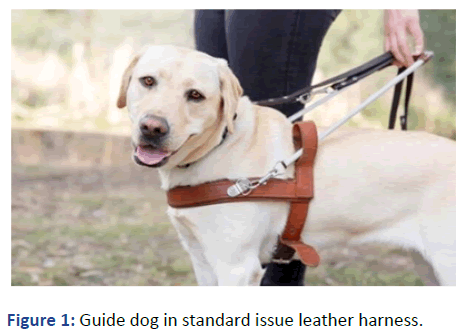
Figure 1: Guide dog in standard issue leather harness.
A systematic review of the biomechanical effects of harness
use identified some dog related issues in harness selection,
despite a dearth of studies and difficulty achieving statistical
power. Different harnesses affect the dog’s gait, some harness
styles can restrict the dog’s back movement, and a "non-restrictive"
harness can still limit the shoulder extension of
the dog [4]. The pressure distribution of different harnesses
varies significantly during straight line travel, curves and
stairs, indicating more evaluation of the effects of harness
types on dogs is needed. We are also interested in the effects
on handlers and the ways the dog/handler team works
together in the community. The travel characteristic least
valued by guide dog handlers (n=61) is pulling or high tension
on the harness or lead. It seems an ellipse-shaped handle and
appropriate grip can reduce stress in the guide dog handler. In
Australia, the National Disability Insurance Agency (NDIA)
funds services, aids and equipment for people with a
disability, putting the choice and control in the hands of the
receiver/participant. Functional assessment tools are needed
to inform evidence based decisions to ensure that
appropriate, effective services and equipment are also cost
efficient, reasonable, and necessary with guide dog handlers
identifying problems with the standard guide dog harness,
and a call from the NDIA for evidence based practice in guide
dog mobility, the aims of this study were to:
• Compare two new harnesses with the standard leather
harness issued by GDNSW/ACT to identify the benefits and
limitations of each.
• Develop and pilot a harness evaluation tool which can be
used to design and evaluate new equipment.
Materials and Methods
This exploratory, sequential mixed methods study with a
QUAL/quan priority was undertaken by Guide Dog Mobility
Instructors (GDMIs) at GDNSW/ACT. This role combines
specialist dog training with a dual qualification as an
Orientation and Mobility (O and M) specialist, teaching dog
handling skills, correcting dog and client behaviour so that the
team travels safely and efficiently, optimizing the wellbeing of
both [5].
It began with a survey to identify concerns from guide dog
handlers about the standard guide dog harness, and features
they thought were important in selecting and evaluating an
effective guide dog harness. These data informed
development of a new harness evaluation tool, which was
piloted with current guide dog handlers (n=22) during
2020-2022, and then revised.
Phase 1: Exploratory Study: During 2019, a preliminary survey
was sent out to all current guide dog clients at GDNSW/ACT
(n=280), to identify specific problems with the standard
leather harness, also considering the clients’ travel experience
with their dog and the functionality and aesthetics of the
current harness. This inquiry was undertaken by a GDMI
cadet, as part of her initial qualification [6].
Phase 2: Harness evaluation pilot study GDMIs used the
preliminary survey data to devise a new Harness Evaluation
Tool (HET), initially using Likert scales to rate opinions about a
range of identified harness features. However, opinions can be subject to drift and without weighting of constructs, the
ratings could not be aggregated to a meaningful, comparable
score. After robust discussions about the relative importance
of harness features, the GDMI team chose to measure 10
features/functions including individual harness components
(body piece, clips, handle, rapid release), impact on the
handler’s travel experience (straight line travel, cornering,
road crossings, tight places) and lifestyle factors (aesthetics,
ease of care). A generic rating scale (3=elite, better than good,
2=good enough, competent, 1=basic, needing improvement,
and 0=unsafe, dysfunctional) previously used in functional
outcome measures was adopted, and performance indicators
were written for each number on each of the ten sub scales to
minimize drift in rating decisions. This meant the ten ratings
could be aggregated on the spot, to a meaningful, comparable
harness score out of 30 [7]. Two new harnesses were chosen
by GDMIs to address issues highlighted in the preliminary
survey: The ruffwear unifly (Figure 2) and the
Queensland harness issued by guide dogs Queensland
(Figure 3), which is based on the royal Dutch guide dog
foundation design. The ruffwear harness came in two colors
and three sizes: A bright yellow, high visibility large harness,
and grey/denim harnesses in small and medium sizes.
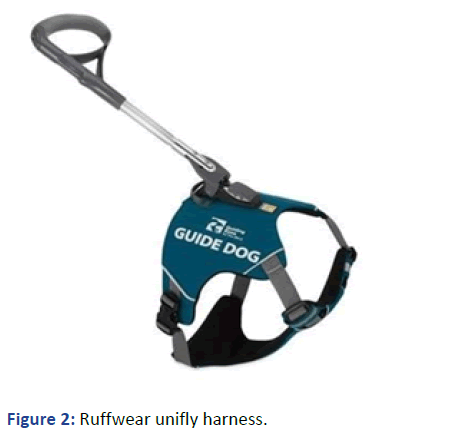
Figure 2: Ruffwear unifly harness.
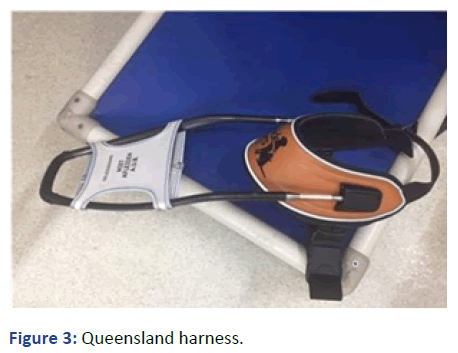
Figure 3: Queensland harness.
Current guide dog clients of GDNSW/ACT (n=280) were invited via mail out in their preferred format (email, large print) to
submit an expression of interest in the harness trials. To be
eligible, they needed to have worked for at least 12 months
with a dog less than eight years of age when registering their
interest of the 36 guide dog handlers who responded, 25
were selected [8]. People in Sydney and Newcastle were
selected randomly, and convenience sampling was used for
resourcing reasons, to select clients in Northern and Southern
NSW. This study was approved by the Swinburne university
human research ethics committee (20202705-4906) and the
animal ethics committee (20202807-4415). Each participant
was notified of their selection in the study and gave informed,
written consent. Participants were asked to trial two new
guide dog harnesses, each for one week. They completed an
evaluation of the original leather guide dog harness before
the first harness trial and after the second harness trial, as
well as an evaluation of each new harness after each trial
week. They were encouraged to discuss their experience with
others during this study, because conversation helps to
articulate tacit, experiential knowledge. A survey monkey link
to the HET was emailed to participants and if access to the
survey was difficult, a GDMI recorded the results during a
phone call with the handler [9]. GDMIs that were issuing and
collecting each trial harness were equipped with a checklist
including standard instructions and tasks to guide the process.
The GDMI observed the unit’s working relationship and the
dog’s level of comfort using the trial harness over a familiar
route, with the understanding that, if the dog did not settle
within 15 minutes, or the unit’s work seemed unsafe, or the
participant felt unsafe, they should cease the trial. The
research protocol intended that the two trial harnesses be
allocated alternately to control for first trial bias, but
COVID-19 delayed harness availability and restricted visits to
clients’ homes so that most participants were given the
ruffwear harness to trial first. Two of the 25 participants were
unresponsive to contact, and one dropped out between the
first and second harness trials due to propping (when the dog
refuses to move off the spot, requiring harness removal to get
the dog moving again). After all trial harnesses were returned,
the remaining participants (n=22) were encouraged via email
or telephone to complete any unfinished surveys, resulting in
15 complete data sets including ratings and comments (8
females, 7 males; mean age 49.6, age range 22-70 years) and 8
partial datasets we could use for qualitative analysis (5
males, 3 females; mean age 44.13, age range 21-71).
Data Analysis
Initially, statistical analysis produced percentages for
categorical responses. Due to small sample size and the
unknown population distribution, a non-parametric Friedman
test was conducted to assess the difference of the average
response on the four harness evaluations for the same group
of participants [10]. Also, to examine the differences between
the related groups Wilcoxon signed rank post-hoc tests were
conducted separately. Data were analysed using SPSS version
28. Participants’ comments from the HET were downloaded
from survey monkey to an excel spreadsheet and first analysed manually by harness feature/function and then in
conjunction with statistical results.
Results
Phase 1: Exploratory Study
The features of concern that handlers identified in the
standard leather harness were:
• Heavy materials make a heavy harness.
• Body piece is ill-fitting.
• Branding not obvious.
• Clips are hard to use.
• Handle gets caught when going under a seat reflective
tape on the handle looks tatty.
• Joint between the handle and the body piece impacts
guiding.
• Handle is hard to get on and off.
• Unpleasant smell when the leather and dog get damp.
Phase 2: Harness Evaluation Pilot Study Harness
Evaluation
The statistical results (partly for the non-parametric test) were
analysed first. Median response scores for the standard
leather harness first trial, ruffwear unifly harness, Queensland
harness and leather harness second trial were 20 (14 to 28),
28 (19 to 30), 24 (11 to 29) and 23 (8 to 30), respectively.
The difference in total score depending on which of the new
harnesses was trailed first was not statistically significant (Chi-square (3)=5.34, p=0.149). However, post hoc analysis with
Wilcoxon sign-rank test revealed a significant difference in
scores between Leather Harness second trial and ruffwear
unifly harness (Z=-2.011, p=0.044), and between leather
harness first trial and ruffwear unifly harness (Z=-2.362,
p=0.018) (Figure 4).
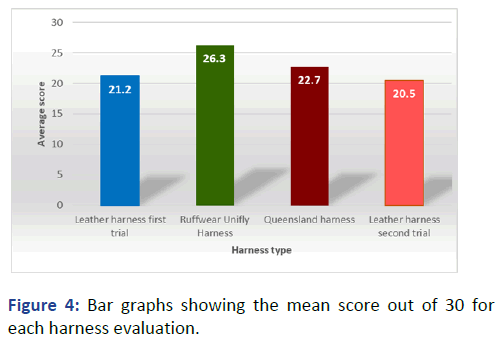
Figure 4: Bar graphs showing the mean score out of 30 for
each harness evaluation.
There were no significant differences on the response score
between Queensland harness and ruffwear unifly harness
(Z=-1.836, p=0.066), or between leather harness first trial and
leather harness second trial (Z=-0.031, p=0.975), or between
Leather Harness second trial and Queensland harness (Z=-0.974, p=0.330), or leather harness first trial and
Queensland harness (Z=-0.912, p=0.362).
Analysis of the rating scales according to the level of scale
indicated that all three harnesses were considered acceptable
as guide dog equipment, but the ruffwear unifly rated better
than good, followed by the Queensland harness (Figure 5). Figure 6 indicates further breakdown of ratings according to
harness features.
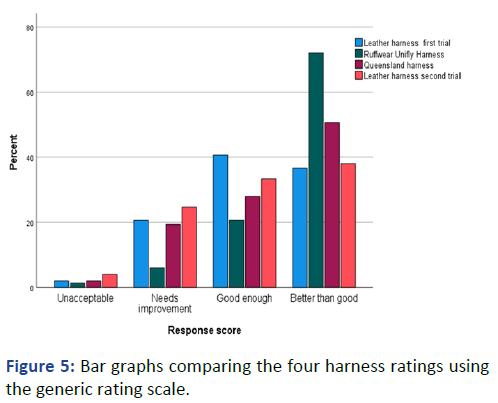
Figure 5: Bar graphs comparing the four harness ratings using
the generic rating scale.
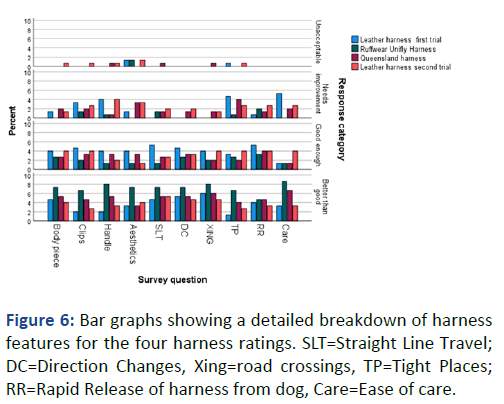
Figure 6: Bar graphs showing a detailed breakdown of harness
features for the four harness ratings. SLT=Straight Line Travel;
DC=Direction Changes, Xing=road crossings, TP=Tight Places;
RR=Rapid Release of harness from dog, Care=Ease of care.
Participants’ comments analysed alongside subscale ratings
were grouped into three categories focusing on dog
wellbeing, travel experience, and transitions between
activities [11].
Dog Wellbeing
Participants confirmed that all three harnesses were good
enough, or better than good for guide dog mobility, but one
participant preferred a product constructed from non-animal
materials, for ethical and personal reasons.
Ten participants noted that the synthetic body piece of the
ruffwear unifly resulted in the dog “overheating” or at least
getting hot [12]. Some suggested a thinner material would make this harness a better fit for the dog; more flexible, more
comfortable, and less likely to cause hotspots (acute, moist
dermatitis caused by friction, though no hotspots developed
during the one week trial.
Travel Experience
The modern ruffwear unifly harness rated best for aesthetics,
but some participants noted that the traditional leather
harness is a publicly recognized identifier of the dog’s guiding
purpose, facilitating access to public places [13]. Opinions
about the clips varied. The plastic clips on both trial harnesses
prevented the dog’s fur from being marked but the
Queensland Harness clips were considered bulky and difficult
to use one handed. The ruffwear clips rated well, but
comments identified a preference for one clip, not two. Many
participants valued the adjustability of the ruffwear handle
and indicated that the Queensland harness would be
better if also telescopic. Ms K suggested fixing the
lightweight handle from the Queensland harness onto the
standard leather harness, whereas others felt there was not
enough give in the Queensland harness handle, and the grip
was not wide enough for a large hand. A few participants
enjoyed the light weight of the Queensland harness, while
others disliked the colours and the lack of flexibility in the
body piece.
Transitions between Activities
A guide dog harness might be taken on and off many times a
day, and the leather harness and the Queensland harness
could both be swung over the hander’s shoulder, fitting
snuggly under the arm, allowing the handler to use both
arms. The ruffwear head hole seemed a little too small,
making it difficult for some handlers to fit this harness over
the dog’s head, and the ruffwear harness was also difficult to
hold while toileting the dog. However, Ms A explained that
these negatives were overridden by her positive travel
experience, finding it easier to follow the dog’s movements
through the ruffwear harness. The leather harness was
considered good for tight places, but one participant
suggested if the handle was easier to remove it would be
easier to retrieve the dog if stuck under a seat. Handlers could
more easily remove the handle of the ruffwear and
Queensland harnesses. The Queensland harness rated well
for care compared to the standard leather harness, but few
comments were made about either, whereas the ruffwear
harness was considered easy care.
Revision of the Harness Evaluation Tool
The draft HET provided detailed information about harness
features that mattered to participants in the preliminary
inquiry and the tool was successful in reducing qualitative
data to comparable scores. However, piloting showed that
several subscales needed to be re-configured to better
represent issues of concern in harness selection, rather than
issues of concern in guide dog training or travel. Performance
indicators in several of the scales were also revised for clarity.
Body Piece and Dog Comfort Scales
The body piece in the three harnesses raised no particular
concerns in relation to reading the dog’s movement cues, but
the unexpected issue of overheating highlighted the need to
separate ‘body piece-reading cues’ from ‘dog comfort’ to
ensure consideration of the body piece from both dog and
handler perspectives.
Aesthetics and Branding Scales
Piloting indicated that while both branding and aesthetics
relate to sense of identity, they are sufficiently different to
warrant a subscale each. Branding had more to do with public
image and alignment with a particular community, or guide
dog sub culture. Placement of brand, logo, and associated
colours on the harness made the imposed work of guide dog
ambassador easier by association with a reputable guide dog
school, also supporting access to public places. Harness
aesthetics seemed to be more about personal style–individual
preferences for personal presentation, with consideration of
safety. For example, one respondent disliked the brown and
orange aesthetic of the Queensland harness but would
be happy to have high visibility yellow on the harness for
safety.
Effective Travel Scale
Route travel accounts for a substantial amount of the guide
dog’s work in harness, and road crossings are one of the most
complex travel challenges for a guide dog handler, so the
GDMI team had split travel into the three components of
straight line travel, cornering, and road crossings to give route
travel more weight (9/30) in the overall HET score. However,
road crossings received few comments perhaps respondents
felt this function was already covered in straight line travel
and direction changes. Successful road crossings depend less
on harness design and more on the handler’s traffic decisions,
and if the harness works well for a varied ten-minute trip, it is
likely also effective for extended trips encompassing
footpaths and roads. Thus, we re-combined these three
subscales into one ‘effective travel’ subscale. This coupled
with ‘reading cues’ meant that in the revised tool, only 6/30
points were given to facilitating route travel [14].
Wording
There was some confusion in ‘rapid release’ comments about
whether this meant removing the whole harness from the
dog, or just the handle from the body piece. Thus, this scale
was reworded to mean removal of the whole harness. Other
performance indicators were revised when dividing the body
piece/dog comfort subscales and the aesthetics/branding
subscales, and when combining the effective travel subscales
(Table 1).
| Pre-pilot constructs |
Post-pilot constructs |
| Body piece |
Body piece-reading cues |
| Dog comfort |
| Clips |
Clips |
| Handle |
Handle |
| Aesthetics |
Aesthetics-personal identity |
| Branding-public image |
| Straight line travel |
Effective travel |
| Cornering, changing direction |
| Road crossings |
| Tight places |
Tight places |
| Rapid release (toileting, car travel) |
Fitting and removing harness |
| Ease of care |
Ease of care |
Table 1: Changes to the weighting of constructs in the Harness evaluation tool after piloting.
Discussion
This study explored whether concerns about the standard
guide dog harness issued by GDNSW/ACT could be resolved
by either the ruffwear unifly harness or the guide
dogs Queensland harness. The pilot indicated all three
harnesses were considered acceptable for guide dog
mobility. The ruffwear harness scored better overall but
raised concerns about the dog’s comfort. The new HET
provided an effective method for handlers to report their
trial evaluations. The ratings distilled the merits and
limitations of the three harnesses making comparisons easy,
while open comments illustrated specific ways each feature/function impacted their guide dog work and lifestyle or
might be improved. After piloting, some constructs were re-weighted
and performance indicators reworded to better
align with participants’ priorities. The revised version of the
HET is included.
Harness Comparisons
Like Palya et al., we found that no equipment is perfect, and
choosing involves trade-offs. While the primary purpose of a
guide dog is to support safe, effective travel, it facilitates
connections with others and fosters wellbeing of the handler,
also empowering new life style possibilities. Thus, harness
preferences have as much to do with the dog’s comfort and
the handlers’ lifestyle, social identity, priorities, and
convenience as with route travel itself.
Appleby, et al., highlighted the importance of client
consultation prior to altering equipment used with assistance
dogs, and our pilot provides harness manufacturers with
guidance from handlers about ways that each product could
be improved.
Guide dog handlers in our pilot wanted a harness that is
comfortable for the dog and lightweight, providing timely
feedback. The attachments and fixing mechanisms need to be
easy to use, and public identification of the animal’s purpose
as a dog guide is highly valued.
The advantages of the ruffwear unifly harness: Handle,
facilitating effective travel, fitting into tight places and general
aesthetics were weighed up against the ill-fitting body piece
and concerns from nearly half of respondents about the dog
overheating.
The advantages of the Queensland harness, namely the
clips and fitting into tight places, vied with lower ratings for
aesthetics and reading direction changes.
The standard leather harness rated well for elements of
effective travel, perhaps due to familiarity after years of
experience using this harness, but difficulties persisted with
removing the handle, and with manipulating metal clips that
can knock the dog in the face and can mark the dog’s fur.
Reweighting the Harness Evaluation Tool
When developing new measures, validity and reliability are
important, giving confidence that the resulting data are
meaningful, and recommendations are robust. The HET was
initially designed by GDMIs around features that guide dog
handlers indicated were important, but subtle differences
between the priorities of guide dog professionals and clients
became evident in the redundancy of route travel details in
the piloted scales. Feedback from pilot participants helped to
shift the weighting of constructs and their performance
indicators closer to handlers’ priorities, increasing the validity
of the HET as an outcome measure, also demonstrating the
importance of researcher reflexivity and member checking in
developing new measures. In considering the reliability of HET
scores, we wondered if the trial of two novel harnesses might
influence participants’ perception of the standard leather harness, either positively or negatively. However, ratings for
the standard issue harness both before and after evaluating
the two novel harnesses indicated no significant change in the
overall score of the leather harnesses. This analysis suggests
that the HET is a stable, reliable measure, not subject to drift,
and Ms K commented on the value of familiarity: After using
the trial harnesses and putting this one back on, both times I
have been overwhelmed with gratitude for being reunited
with this harness and slipping back into that feeling of
absolute unity and smooth travel with my dog.
Implications
In Australia, the NDIA that funds guide dog services and
equipment places a priority on participants’ choice and
control and so it seems appropriate that guide dog handlers
choose their own harness from a range of available options, in
collaboration with their GDMI. Some clients, tired of waiting
for changes in the standard issue harness now look online to
source and trial new harness designs. The HET provides these
initiators with a tool for independent harness evaluation as
well as a framework for shared decisions with GDMIs, guide
dog schools and funding bodies, or code sign with harness
manufacturers and other stake holders in the harness
industry.
The HET also provides an outcome measure for use in formal
research. Harris et al., suggested a sample size of at least 27
subjects is needed to collect clinically relevant data about the
biomechanical impact of harnesses on dogs, but such high
participant numbers seem to be infeasible in this niche field.
This study confirmed that a meaningful dataset can be
generated from fewer participants in outcomes studies by
using embedded mixed methods, where measures and
qualitative data are generated from the same context and
then analysed together to triangulate findings. This led to a
richer understanding of the issues and complexities involved
in harness selection than could be achieved when relying on
statistical power alone to assert robust findings.
Although the ruffwear unifly harness scored best of the three
harnesses evaluated, concerns about the dog overheating
warrant further investigation before widespread uptake can
be recommended. Ruffwear manufacturers explained that the
body piece needs to be sturdy to support the single point
handle, but they are open to adapting this harness design to
better suit handlers’ needs.
Our pilot findings suggested that only minor modifications to
the standard leather harness issued by GDNSW/ACT, are
needed to update the design for current use, including a new
handle that is easier to remove, with softer, more ergonomic
clips.
Limitations and Opportunities for Further Research
Our intended study design (n=25) was compromised by the
COVID-19 pandemic, which restricted supply of harnesses to
GDNSW/ACT, and delivery from GDMIs to clients. This meant
we could not alternate allocation of the two novel harnesses
to reduce the bias of primacy, and most participants trailed
the ruffwear harness first. While participants seemed to find
the survey monkey format accessible, some found it tedious
completing the HET four times in the study and some needed
a reminder to complete evaluations once trials were finished.
Although 22 participants’ trailed the new harnesses, we only
generated 15 complete datasets. A couple of dogs “propped”
when fitted with the queensland harness and were not able
to complete that trial week. Propping highlighted the need for
further research into the animal side of equipment selection.
A few clients commented that one week was not long enough
to become familiar with each new harness, especially since
COVID-19 restrictions limited their ordinary travel [15]. They
considered that their dog’s guiding and comfort level with
either new harness would improve with practice, so an
extended trial period seems warranted to increase familiarity
and make a more comprehensive harness evaluation. The HET
might have broader utility in the assistance dog industry,
providing a template for how to measure equipment
performance, based on features and functions that matter to
handlers. Choosing 10 constructs, aggregating to a
comparable score of 30, gave us a firm measurement
framework within which to weigh and review the relative
importance of each construct. Our study showed that the
generic 3-2-1-0 rating scale originally used to assess human
performance works equally well to evaluate harness
performance and can easily be appropriated to other kinds of
equipment, performance, and functional outcome measures.
Conclusion
This pilot study showed that all three harnesses in the trial are
considered acceptable guide dog equipment, and that the
ruffwear unifly harness shows promise as an innovative
alternative to the standard leather harness issued by GDNSW/ACT. Person-centered practice suggests that guide dog clients
be offered a choice of harnesses, then be involved in
evaluating the options and selecting the best fit for their own
needs. However, comparable feedback about the three
harnesses can be used by GDMIs to inform client choices and
tailor harness recommendations, and by guide dog schools to
inform budgeting and resource allocation, making best use of
limited resources.
The harness evaluation tool, devised and refined in this study,
generates a valid, reliable mixed dataset about guide dog
harness design and functionality. This functional evaluation
frame work equips individual guide dog handlers and harness
evaluation teams to reduce, standardize, quantify, and
compare handler feedback about familiar and novel guide dog
harnesses used in everyday lived environments, without
needing to contrive standardized research tasks or venues.
The result is practice based evidence to support informed
harness choices and ongoing development of guide dog
equipment that is fit for purpose.
Acknowledgements
We would like to thank GDNSW/ACT for staffing this research
project, to improve outcomes for guide dog handlers and build on research in this field. We would like to thank
Geoffrey Pilcher for his generous financial support and
Mariagrazia Bellio, O and M specialist, for assisting with the
literature review and ethics application and of course, the
participants (handlers and dogs), who volunteered their time,
expertise and frank feedback.
References
- Crossman MK, Kazdin AE (2016) Additional evidence is needed to recommend acquiring a dog to families of children with autism spectrum disorder: A response to Wright and colleagues. J Autism Dev Disord. 46:332-335.
[Crossref] [Google Scholar] [PubMed]
- Bernardin HJ, Smith PC (1981) A clarification of some issues regarding the development and use of Behaviorally Anchored Ratings Scales (BARS). Int J Appl Psychol. 66(4):457-458.
[Crossref] [Google Scholar]
- Lafuente MP, Provis L, Schmalz EA (2019) Effects of restrictive and non-restrictive harnesses on shoulder extension in dogs at walk and trot. Vet Rec. 184(2):64-64.
[Crossref] [Google Scholar] [PubMed]
- Lloyd J, Budge C, La Grow S, Stafford K (2016) An investigation of the complexities of successful and unsuccessful guide dog matching and partnerships. Front vet sci. 3:113-114.
[Crossref] [Google Scholar] [PubMed]
- Deverell L, Bradley J, Foote P, Bowden M, Meyer D (2019) Measuring the benefits of guide dog mobility with the Orientation and Mobility Outcomes (OMO) tool. Anthrozoos. 32(6):741-755.
[Crossref] [Google Scholar]
- Winkelmayr B, Peham C, Fruhwirth B, Licka T, Scheidl M (2006) Evaluation of the force acting on the back of the horse with an English saddle and a side saddle at walk, trot and canter. Equine Vet J Suppl. 38(36):406-410.
[Crossref] [Google Scholar] [PubMed]
- Harris LK, Whay HR, Murrell JC (2018) An investigation of mechanical nociceptive thresholds in dogs with hind limb joint pain compared to healthy control dogs. Vet J 234:85-90.
[Crossref] [Google Scholar] [PubMed]
- Kloep ML, Hunter RH, Kertz SJ (2017) Examining the effects of a novel training program and use of psychiatric service dogs for military related PTSD and associated symptoms. Am J Orthopsychiatry. 87(4):424-425.
[Crossref] [Google Scholar] [PubMed]
- Meyer D, Bhowmik J, Islam FMA, Deverell L (2020) Profiling guide dog handlers to support guide dog matching decisions. Disabil Rehabil. 42(1):137-146.
[Crossref] [Google Scholar] [PubMed]
- White CJ, Jaff MR (2012) Catch-22: Carotid stenting is safe and effective (food and drug administration) but is it reasonable and necessary (centers for medicare and medicaid services)? JACC Cardiovasc Interv 5(6):694-696.
[Crossref] [Google Scholar] [PubMed]
- Palya Z, Racz K, Nagymate, G, Kiss RM (2022) Development of a detailed canine gait analysis method for evaluating harnesses: A pilot study. PLoS One. 17(3):0264299.
[Crossref] [Google Scholar] [PubMed]
- Peham C, Limbeck S, Galla, K, Bockstahler B. (2013) Pressure distribution under three different types of harnesses used for guide dogs. Vet J. 198:93-98.
[Crossref] [Google Scholar] [PubMed]
- Konno SI (2019) Integrating basic knowledge and clinical ability. J Orthop Sci. 24(5):762-763.
[Crossref] [Google Scholar] [PubMed]
- Lafuente MP, Provis L, Schmalz EA (2019) Effects of restrictive and non-restrictive harnesses on shoulder extension in dogs at walk and trot. Vet Rec. 184(2):64-64.
[Crossref] [Google Scholar] [PubMed]
- Winkelmayr B, Peham C, Fruhwirth B, Licka T, Scheidl M (2006) Evaluation of the force acting on the back of the horse with an English saddle and a side saddle at walk, trot and canter. Equine Vet J Suppl. 38(36):406-410.
[Crossref] [Google Scholar] [PubMed]
Citation: Gates F, Deverell L, Ritchie D, Fagan A, Wood M, et al. (2023) Piloting a Guide Dog Harness Evaluation Tool to Inform Evidence-Based Practice. J Anim Sci Livest Prod. 7:50.
Copyright: © 2023 Gates F, et al. This is an open-access article distributed under the terms of the Creative Commons Attribution License, which permits unrestricted use, distribution, and reproduction in any medium, provided the original author and source are credited.







